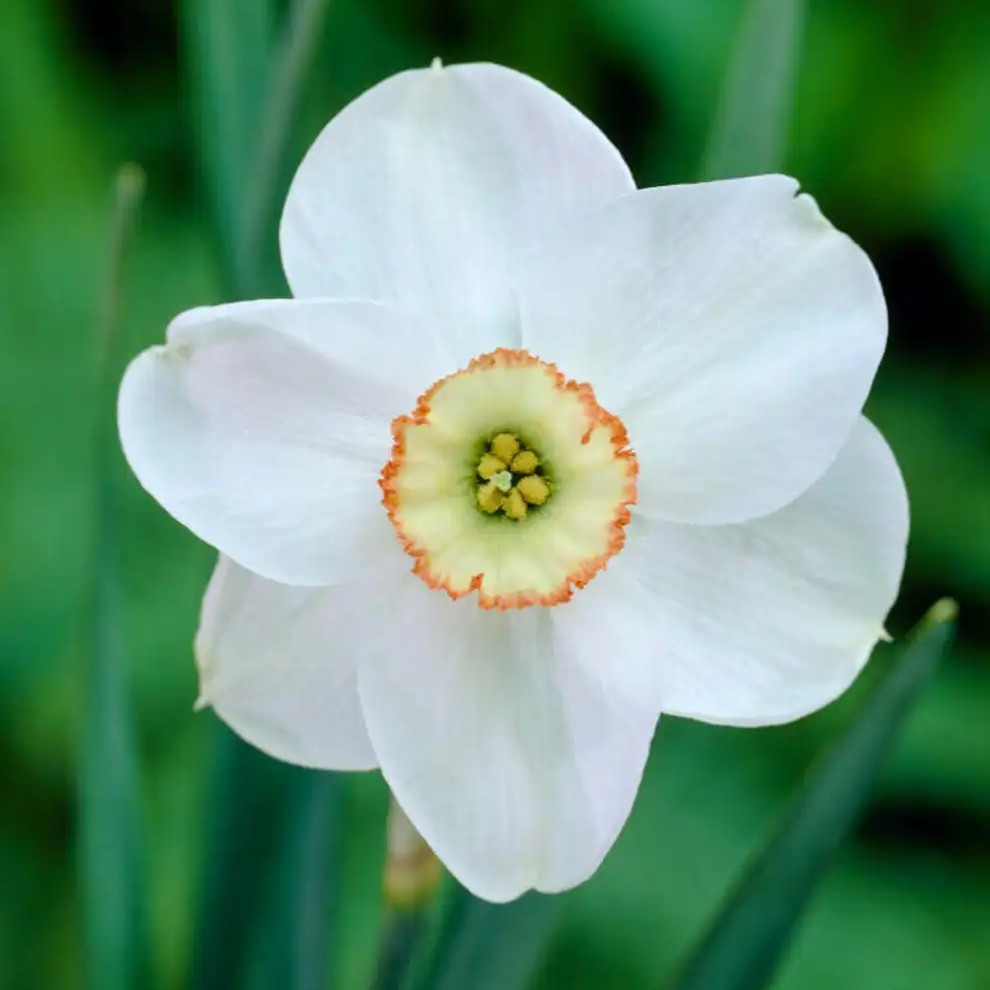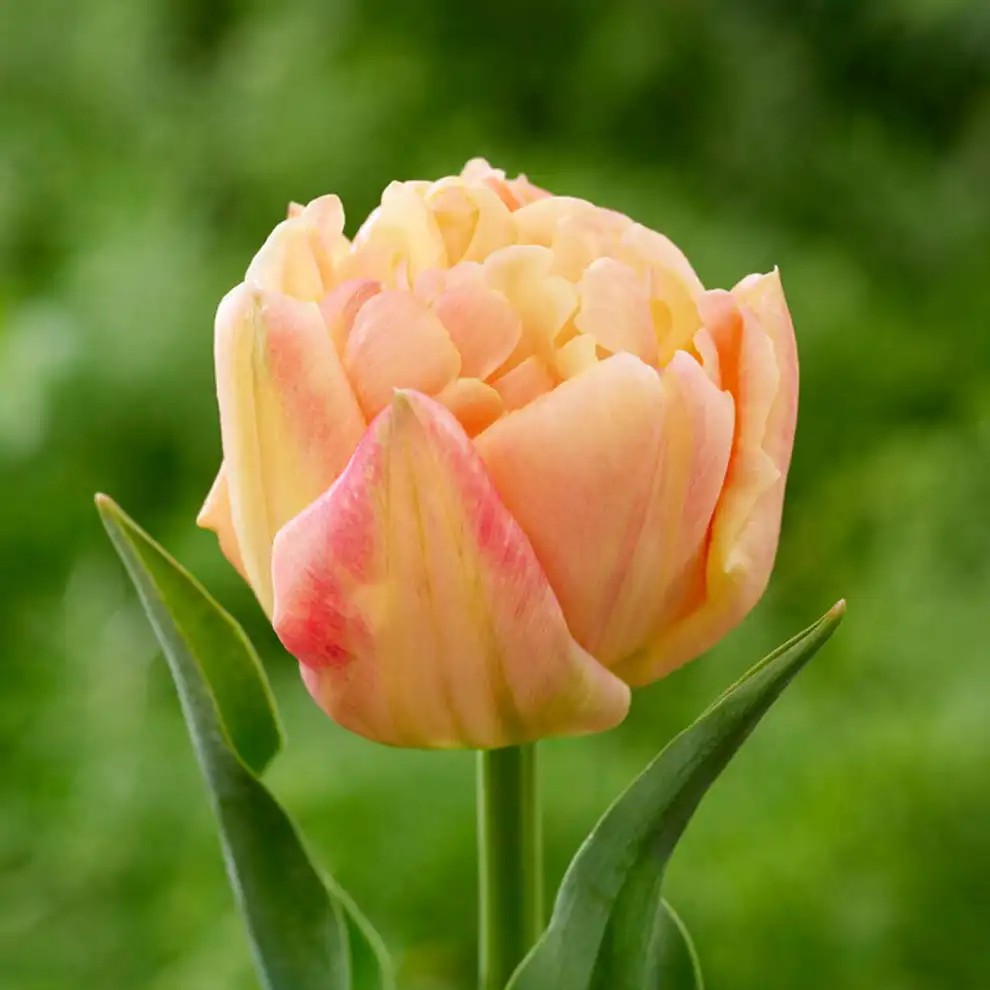Garden Diaries: An English flower garden of one's own – how Pom Shillingford grew more than just dahlias and sweet peas in the grounds of her Connecticut home
From her grandmother's greenhouse in Hampshire, England, to an exquisite flower garden in rural Connecticut, Pom Shillingford's story is one of memory, beauty and growing something deeply personal

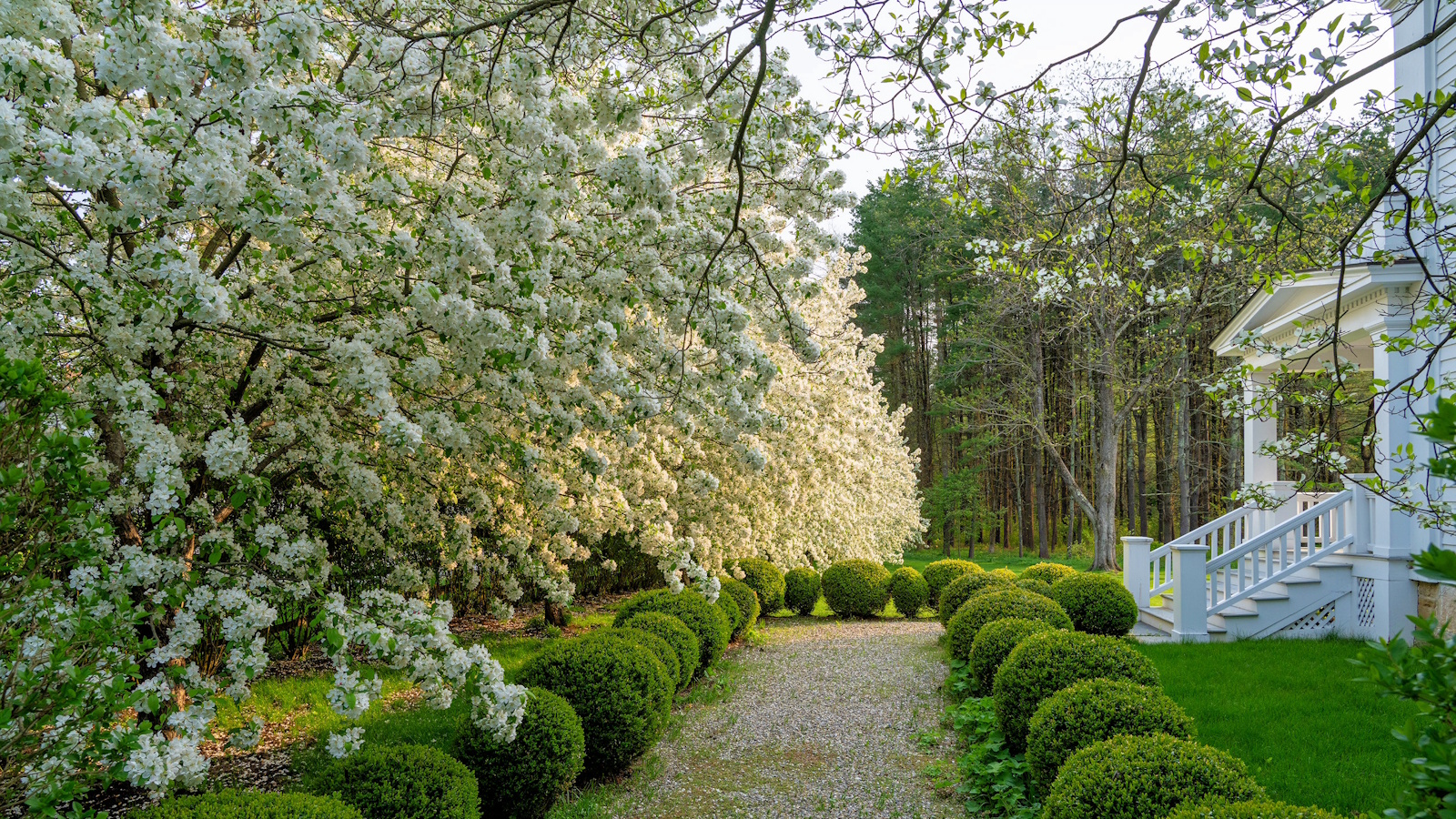
In the first winter after moving to rural Connecticut, Pom Shillingford stood at her kitchen window each morning and stared out at very little. There were no flower beds. No hedges. Just a barren scene of bare earth and old, haunting trees pressing in against a wide, empty sky. 'There was very little in the way of a garden, it was just grass,' she remembers.
'All winter, I looked out from that kitchen window, thinking about what I wanted to see. A garden of my own, made from nothing.' Every sightline, every idea began from that view. 'The whole garden was imagined and designed from that kitchen window,' Pom says. What began as bare soil that first winter would eventually become a deeply personal English flower garden. A nostalgic, romantic space, full of tumbling sweet peas and dinner plate dahlias.
'I like structure,' Pom says, 'but I like chaos more. Abundant, wild floral chaos within crisp yew hedging – what could be better?' Over the years, these garden ideas would grow into a sanctuary for her family to enjoy, but also, it would become the foundation of her seasonal cut flower business, English Garden Grown. But the roots of all this go back much further, to Pom's childhood.
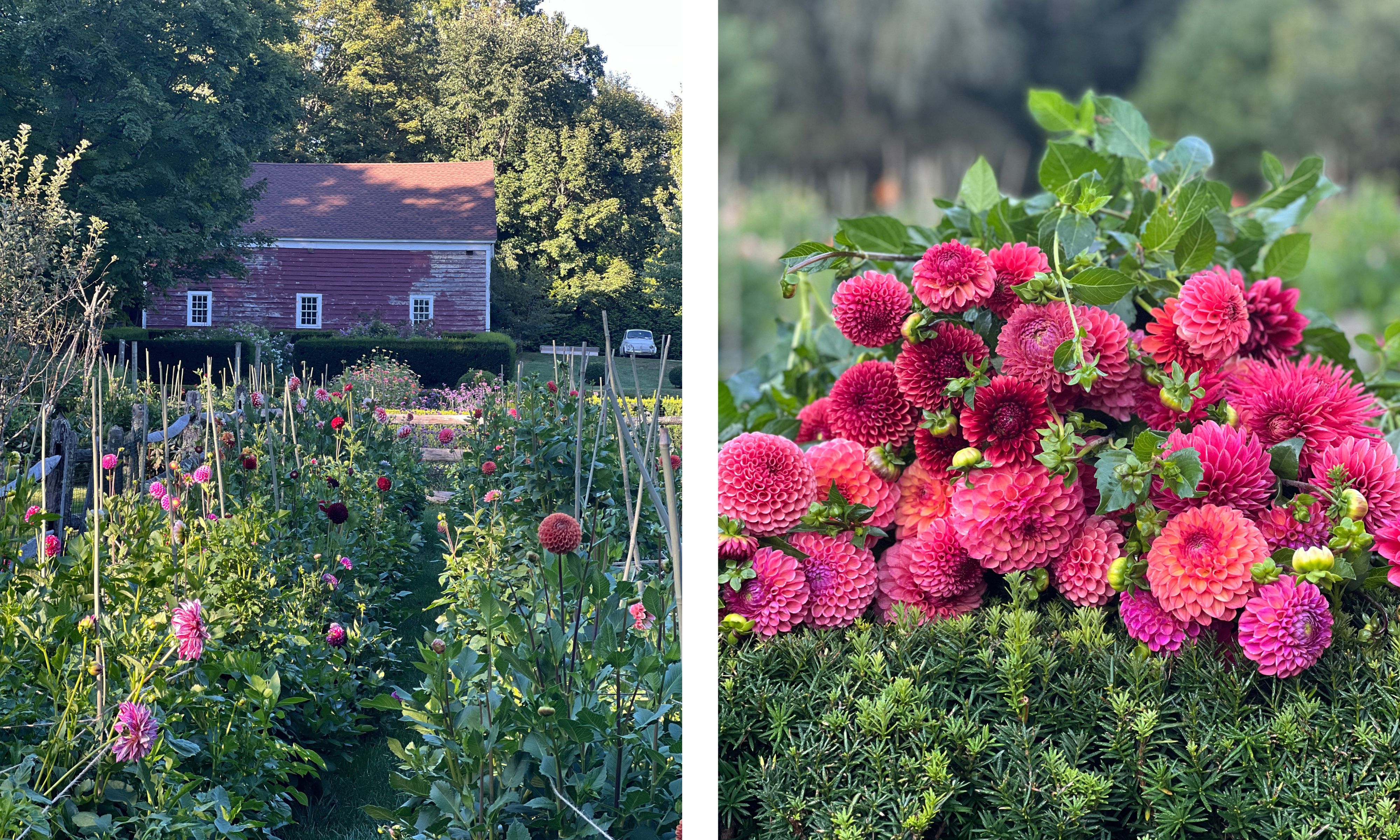
Garden memories of childhood – The scent of a greenhouse
In the first winter after we moved to rural Connecticut, I stood at my kitchen window each morning and stared out at very little. No flower beds. No hedges. Just a barren stretch of grass and old, overgrown trees pressing against the house. I also wasn't prepared for the grass turning completely brown here in winter.
Despite how depressing it was, I was imagining what could be. I’d look out and think, what do I want to see here? The garden was designed entirely from that one sightline. I imagined flower beds and hedges and color. I wanted a garden of my own, grown from nothing.
Now, that garden is a real place. Full of yew hedging and sweet peas, fruit trees and chaos. It’s nostalgic, a bit romantic, and very personal. I like structure. But I like chaos more; abundant, wild floral chaos within crisp lines. That’s what I’ve built here.

I grew up in England, in Hampshire, in a big blended family. But I was closest to my father’s mother. She lived in the same village we moved to, and her garden shaped everything.
She had an Arts & Crafts–style house with a garden full of yew-lined rooms. There was a formal rose garden, an orchard that buzzed in spring, a special bonfire room, and hedges with secret holes we’d crawl through. The apple store was terrifying, mice, cobwebs, brown apples by February. But that was part of the charm.

What I remember most is the scent. That sticky, green smell of tomato vines in the greenhouse – it’s still the scent of home for me. That greenhouse was attached to my grandfather’s art studio and filled with pots, cobwebs and a water tank coated in green slime.
Walter, the gardener (and village postman), tolerated me. I was always underfoot, touching everything I wasn’t supposed to. But I wanted to learn. I think I started learning about gardening then.
I didn’t realise it at the time, but that garden planted something in me. It lay semi-dormant through the years in Chicago and New York, until one gray Connecticut winter, looking out of the kitchen window, it had the chance to flourish again.

Setting down foundations – Building a new garden in Connecticut
By the time we decided to leave Manhattan, we were five floors up with three kids and a deep need for both more space and more nature in our lives. It was insanity. I told my husband, David, I’m done. We have to get out.
We weren’t planning on rural northwest Connecticut. But we found ourselves putting in an offer on a run-down 1830s farmhouse, mostly for the land. It was three and a half acres of mess. Overgrown pines, towering hemlocks, dark, and overbearing. But I looked at it and thought: If we clear this, I could create a memory garden, my granny’s garden.
We moved in that November. From then until Easter, I stood at that same kitchen window, staring out and planning. A deer fence was the first non-negotiable. Before anything else, even before having a working kitchen inside, I had this installed. Because otherwise, the deer just destroy everything in New England. My flowers and shrubs wouldn't have lasted a week.
The following April, we dug our first flowerbeds and planted a line of yew hedges. Then we added another 'room.' Then an orchard, because, of course, I needed an orchard.
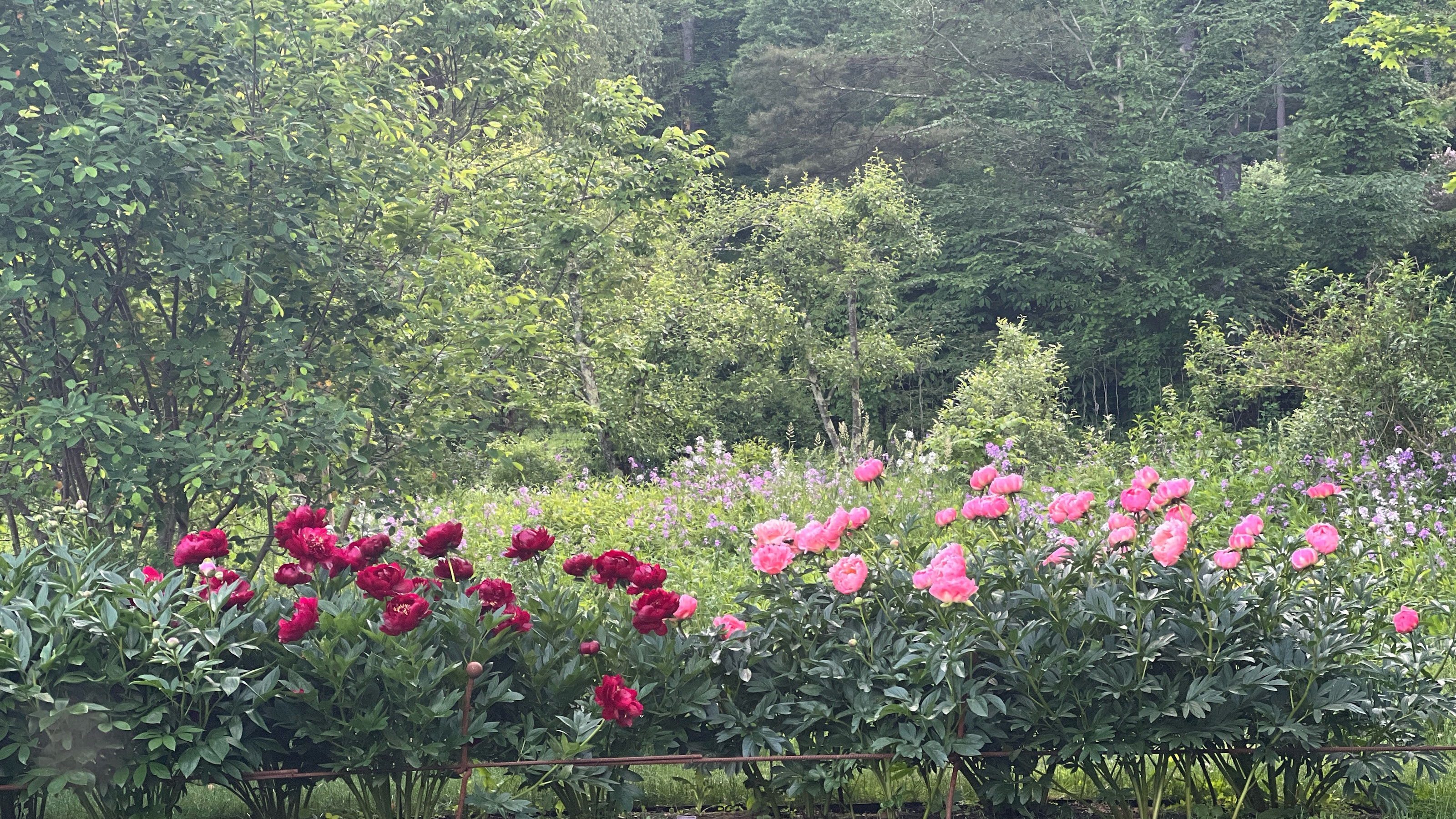
We did it in manageable chunks. We had no money, no time, and not much of a clue. People thought we were mad. But the vision kept going. We added structure because the winters here are brutal, everything goes brown by November and doesn’t really come back until April. I knew I needed something architectural to hold it all.
Yew is my favourite. I love the crisp lines, how dark and solid it looks when freshly cut. David does all the topiary now, it’s his thing. He clips, I fill. He trims the edges, and I go wild inside them.
What we’ve created isn’t an American yard, really. It’s a garden. I see it as an extension of our home, not something to control or minimize. It’s where we live, where everything happens.
I think, much like my granny's garden, what we have created isn't a manicured or overly precious space. It is very much alive. Full of bees, blossom, dense hedging, wildflowers. It feels free and ordered at the same time.
And, alongside all of this, there are my flowers. An abundance of flowers. Sweet peas and dahlias, cosmos and peonies, thousands of tulips emerging in one breathless wave each spring.
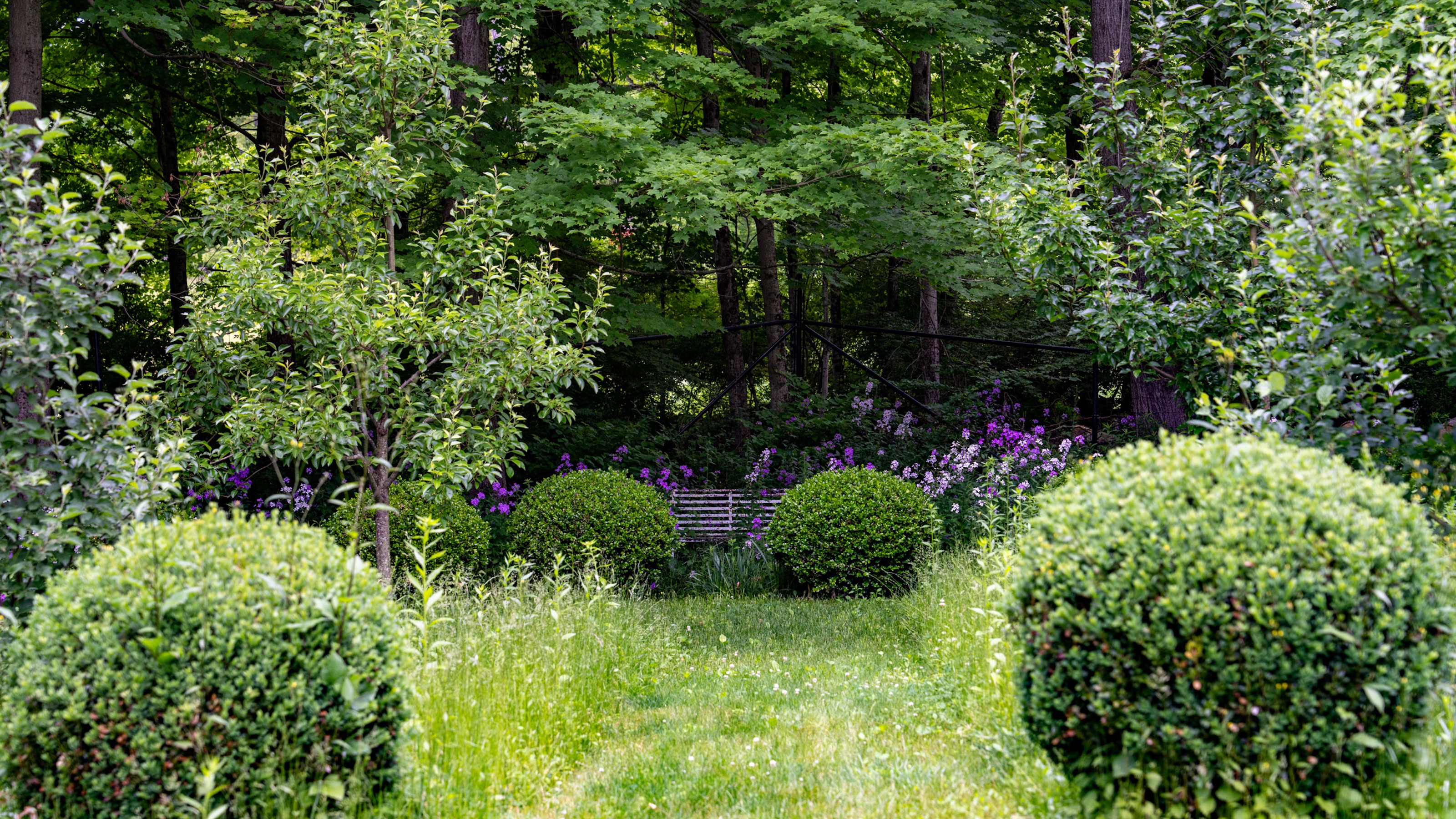
Order and chaos – Flower growing in New England
The flower beds I first imagined from the kitchen window eventually exploded. Sweet peas on hazel wigwams, cosmos swaying, nasturtiums spilling onto the paths.
In 2020, during lockdown, I took a six-week course and decided to give flower farming a real go. I’d always loved flowers, but I’d never thought of it as a job. Then I saw what was local flowers were on offer here. The few seasonal offerings that didn’t feel special, and I thought: I can do better than this. I can create something beautiful.
So, I started English Garden Grown, my seasonal flower business. What started off as a once-a-year offering a year of tulips has ramped up year on year. Outside, things begin around late April or May, and last until late October. But as our winters are so long, I have become a huge proponent of forced winter bulbs.
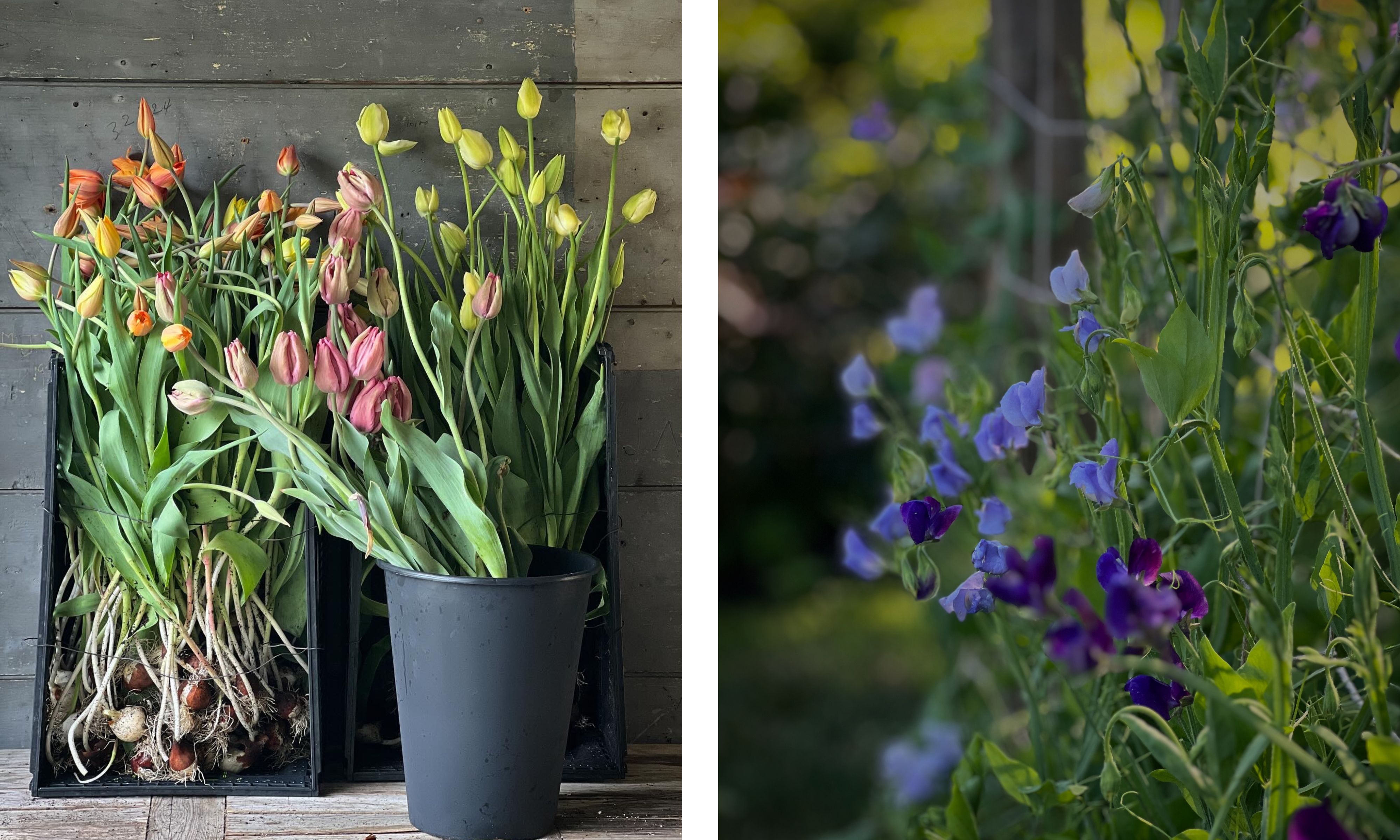
Hyacinths come first. ‘Gypsy Queen’ is my favourite this year, all peach and scent. Then tulips arrive in a mad, brilliant wave.
‘El Niño’ is wild and fiery, ‘Spring Green’ is quietly elegant, and ‘Flamingo Queen’ is ruffled and pink, a proper joy. I grew about 10,000 this year, and I think that is my limit.
By the end of May, though, I’m slightly tulip-mad. One more arrangement and I might scream.
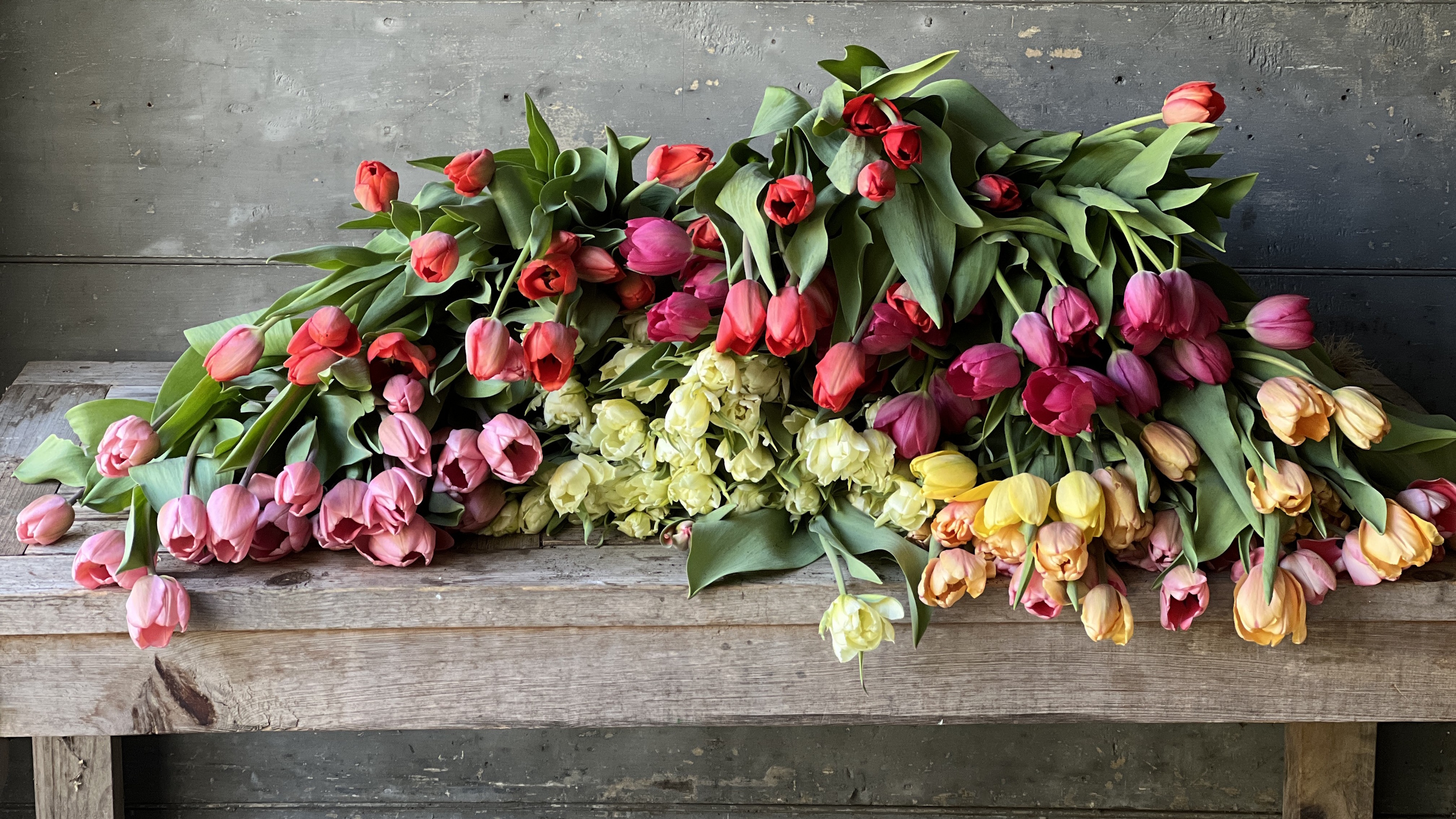
I grow Fritillaria persica too. Dark, candelabra-like blooms that twist toward the light. I love that wildness. I’d take a fritillaria over a supermarket rose any day.
And cow parsley, those delicate white umbels and a cottage-garden feel. It is an airy thing. It reminds me of home. It’s so English, so magical. A little drift of the English countryside, here in Connecticut.
As one flower fades, another rises. That rhythm has taught me everything. Patience. Trust. Letting go. My grandmother always grew sweet peas, and I grow them now too. Too many colours for floristry, and it’s often too hot here for them, but I grow them anyway.
I give them as gifts. You can’t find sweet peas here, and when I hand someone a bunch, their reaction is always so intense. It’s like memory rushes in all at once. That’s what I love about flowers. That’s why I grow them.
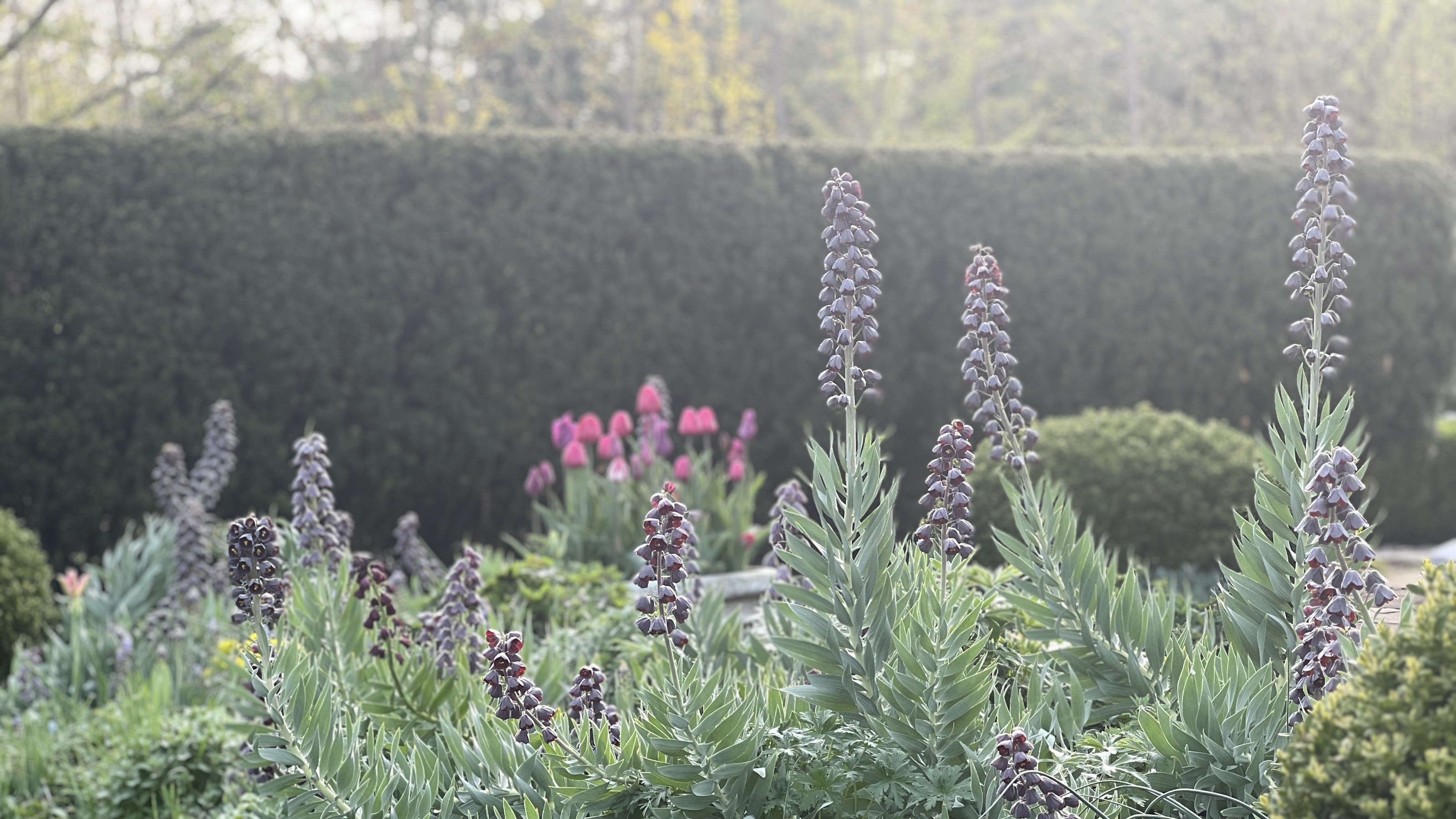
We’ve been here for twelve years now. And we’re still tinkering. Still learning. Still changing things. David’s topiary is immaculate, and I’m not allowed to touch it. He’s also become a fruit tree pruning obsessive. He taught himself by watching videos of elderly cider farmers in Somerset.
I think back to collecting rose petals to make potpourri in my granny's garden, and when we all helped shell peas and top-and-tail redcurrants. We use our garden here now much the same. We are always doing something in the garden; it is just part of life. Food, flowers, smells. It is our everyday, really.
What began as a vision from a kitchen window has become a living, growing being. A whole world of scent and memory and movement. Built slowly, season by season, from the ground up.
If my garden could talk? I think it would say: She’s still learning. Still growing into the space. Some things work. Some don’t. I have found patience in it all.
You can follow Pom and English Garden Grown on Instagram.
Shop your flower-growing accents and plants
Garden Diaries is our new series where we share inspiring stories of designing and cultivating a stunning garden space. We explore how creatives, designers and tastemakers have grown a deeply personal space, inviting creativity, learning and happiness in their gardens, and how they live in these spaces.

Thomas is a Content Editor within the Gardens Team at Homes and Gardens. He has worked as a professional gardener for both public spaces and private estates, specializing in productive gardening, growing food and flowers. Trained in Horticulture at the Garden Museum, he has written on gardening and garden history for various publications, including The English Garden, Gardens Illustrated, Hortus, The London Gardener and Bloom. He has co-authored a Lonely Planet travel book, The Tree Atlas, due out in 2024.


